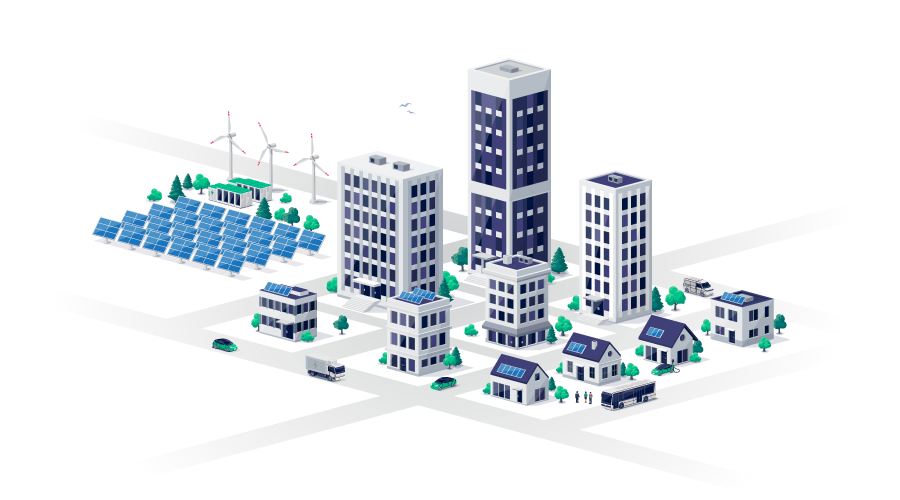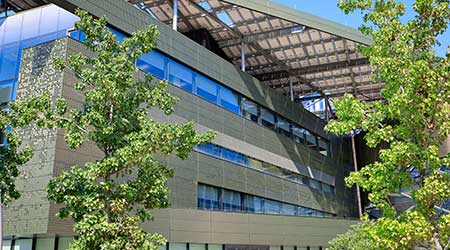Energy Incentives Reborn
While it’s not quite the heyday of utility rebates, deregulation-driven funding for energy efficiency strategies is available — if you know what to look for
Do you remember the good old days of energy efficiency grants and rebates? Many facility executives used such funding to upgrade lighting and other energy systems. Others waited too long and saw the opportunity disappear before they got a piece of the action. Not to worry: Energy efficiency incentives are back. But they may not stay very long, so this is a good time to go after them.
During the first energy crises, from the mid-1970s to the early 1980s, grants and other forms of financial assistance for energy conservation and efficiency were available from state energy offices for schools, hospitals and nonprofit institutions. Funding came through the disbursement of oil price overcharges collected by the U.S. Department of Energy and its predecessor agencies.
By 1991, that funding had essentially dried up. In most states, it was gradually replaced by demand-side management (DSM) incentives open to nearly all nonresidential electric customers, paid by rate hikes allowed by public utility commissions to help control demand growth. The general idea was that new energy-use technologies that cut demand, such as electronic ballasts, could be deployed more quickly and at a lower cost than building new power plants. Various social programs, such as low-income assistance and some energy research and development (R&D) funding, were also supported in this manner. Annual utility rebates crested in 1994 at about $2.7 billion.
During the heyday of such programs, building owners and managers were able to afford improvements that would normally wait until a major building renovation was planned. Payments as high as $1 per avoided watt were being offered. For an electronic ballast that saved 16 watts of power, that could mean up to $16 for a unit that cost at the time about $25, cutting the payback period from four years down to less than two years. While most programs were not so generous, a feeding frenzy nevertheless ensued that fostered the growth of many new energy service companies (ESCOs) that promoted, designed, installed and financed such installations.
Too Good to Last
But all good things must come to an end. According to the 1998 study by the World Wildlife Federation and the Environmental Working Group, “Unplugged: How Power Companies Have Abandoned Energy Efficiency Programs,” between 1993 and 1997 utilities cut their combined investment in energy-saving programs by 45 percent, largely in response to impending deregulation. By the turn of the millennium, most standard DSM programs were just a memory.
Why would deregulation have such an impact? Utility restructuring resulted in most states in the divestiture of existing power plants, thus transferring the responsibility for meeting load from the utilities to a competitive power marketplace. Because DSM programs were part of the effort to meet load, utilities dumping their generation successfully lobbied to also dump DSM programs.
Where utilities remain untouched by deregulation, some old-style rebate programs persist, but they are scattered and often minimally funded.
Energy Activists to the Rescue
An outcry from energy advocates and environmentalists has, however, resulted in a restoration of some efficiency incentives as part of state deregulation legislation. With revenues from non-bypassable wires charge — a fee for using utility distribution lines — war chests have been created to support a variety of energy programs. Also known as a “system benefit charge” (SBC) or “universal service fee,” these fees, which range from $.0003 to $.004 per kilowatt-hour (kwh) depending on the state, may be shown as a separate item on utility bills, or may be hidden in the dollars-per-kwh rate for power delivery. In two dozen states that have deregulated, utilities that are now mainly in the power delivery, not generation, business are acting as tollbooths to collect those charges from all electricity users, regardless of who sells them power.
That amount may not seem like much, but do the math: At $.002/kwh, a 200,000-square-foot commercial office building may be paying $13,000 a year into that fund. Nationally, these programs are collecting almost $2 billion a year of customer money.
The Clinton Administration’s national deregulation bill also called for creation of a public benefits fund of up to $3 billion a year that would have provided, at the federal level, support for the same types of programs. While national deregulation is still being debated on Capitol Hill, any additional federal levy on power bills is unlikely in the face of the present recession.
What’s Getting Funded?
Most SBC funding falls into four basic categories:
- Low-income energy assistance.
- Energy-efficiency and peak-demand reduction grants for both studies and upgrades; this category includes demand reduction measures, such as fuel switching and demand shifting.
- Development and installation of renewable energy sources, such as solar and biomass.
- R&D on clean or efficient energy technologies.
Building owners and facility executives are mainly interested in the second category, though some may wish to displace a portion of their purchased energy by seeking funds under the third category for deploying photovoltaic, geothermal or other sources of renewable energy. An SBC-based grant or loan may be just what’s needed to get an otherwise underfunded project off the ground.
States vary widely, however, when distributing such funds among those four categories. A few don’t provide any money for energy efficiency and instead use the funds for low-income assistance and customer education. Even that distribution has changed over the few short years the programs have been operating, so it’s best to act only on the latest information.
Where these new programs are available, they tend to look and feel a bit different than their predecessors. Many early DSM programs were actually energy-use reduction efforts that did not support demand-shifting efforts, such as thermal storage or fuel switching, because neither significantly reduced total energy consumption. Today’s programs, however, support such options, along with distributed generation and energy management systems capable of tweaking or sequentially reducing demand for short periods. Funding is also provided to projects that facilitate on-call demand-response capabilities, such as interval meters read through Internet connections.
Likewise, some projects that would have been rejected in the old days are now considered priorities. In some power-poor areas, such as New York, the focus is on ways to maintain or expand the reserve margin between peak demand and peak generating capacity. That margin affects both system reliability and wholesale, and thus long-term retail, electricity rates. When the margin drops below a certain level, as occurred during last August’s heat wave in the Northeast, grid operators fear brownouts and sky-high power prices. In such areas, practically anything that reduces stress on the grid will be covered: In New York state, up to 75 percent of photovoltaic systems are being funded up to $6,000 per avoided kw.
Instead of simple dollars-per-lamp or dollars-per-watt payments for installed equipment, a greater rigor may apply to showing how new equipment reduces peak demand, both today and during its lifetime. As a result, measurement and verification requirements abound. To enforce that goal, the money may go directly to an ESCO rather than to the end user, and such payments may be spread over several years to ensure new systems remain in operation. Incentives may also be targeted to energy uses that create summer peak demand by paying, for example, more for avoided chiller consumption than for lighting energy reductions that may occur during winter and night hours.
Some innovation is also apparent. Several programs offer revolving loans, while others provide free or low-cost technical services to assist design development, energy management and other non-equipment support. Harking back to pre-DSM days, various types of energy audits or feasibility studies also are being funded to help customers identify and plan cost-effective options.
Unlike past DSM programs that focused mainly on demand-reduction equipment, today’s programs may also support environmentally friendly on-site generation systems that include microturbines, fuel cells, photovoltaics and wind turbines. Several federal incentive programs, including tax credits, also exist for such technologies, though they tend to focus on educational, governmental and medical facilities.
A great deal of variation exists among the new programs with regard to which types of energy customers receive funding, with most open to all commercial/industrial facilities. Others remain limited to schools, hospitals and government buildings.
Tips and Caveats
Because program money is limited, there is never a guarantee that all applicants will receive funding. In general, each funding category is ensured of some funding, with winners being those who can best configure their applications to fit the programs’ aims. Policies also change quickly, with rising and falling incentive levels, changing rules and shifting priorities.
As with earlier programs, SBC funding covers only a portion of a study or installation project — typically 25 to 50 percent. Within those limits, however, it is not uncommon to find opportunities for cutting the payback period of a project by several years, improving the chances of getting support from a capital budget.
Facility executives in New York state should take note that membership in either ClimateWise or the Energy Star Buildings program, both sponsored by the U.S. Environmental Protection Agency, may boost the state’s contribution to 75 percent. As a result, a customer that could only afford a $25,000 upgrade can now spend that money and instead get a $100,000 upgrade.
Like all government-managed efforts, the money does not arrive overnight. Funding is typically provided in six- to 12-month cycles, and, after applying, one to three months may pass before one is notified that a grant will be received. Under the belief that a competitive marketplace will eventually render such programs unnecessary, many are presently funded for only two to three years. Smart customers should be filling out applications now before the cash disappears — again.
For facility executives, it pays to learn the ropes of these programs. Just as utility rebates were often the trick to getting upper management to commit to an upgrade in the past, these incentives may provide the leverage needed to move forward on a new chiller, energy audit or other efficiency measure. Pointing out that the money may be gone tomorrow is often one of the best ways to get action today.
Lindsay Audin is an energy consultant and president of EnergyWiz.

Getting Started
The best way to determine how these programs could help your facility is to first review them with your utility customer representative — if they are being handled through your utility — or your state energy office. If your organization has an ongoing relationship with an engineering or energy consultant, that firm may also be able to provide guidance on applying these programs to your facility. Here’s a quick two-step process to finding out what programs, if any, may help you:
1. To determine if your state offers energy efficiency or renewable energy incentives paid through system benefit charges, check out the following Web sites. These Web sites include information on programs, incentives and services for all 50 states and the District of Columbia. States appear in alphabetical order. They list all state- and utility-funded programs as of November 2001. The programs in these states may change rapidly, so it’s a good idea to check these sites every few months for updates. For further information, contact local state energy offices or utilities.
• American Council for an Energy Efficient Economy (ACEEE) site:
ACEEE has compiled one of the most regularly updated overview of each state’s SBC funding by category. Under the “EE” column, find the funding available for energy efficiency grants. At the bottom of that column, find the abbreviation for the agency or utility that is handling that program. The site also breaks funding down by mills/kwh, provides information on what mix of renewable energy might be available and notes who’s administering the programs.
• Pacific Northwest National Laboratory site:
PNNL provides updates to state-by-state restructuring and to available programs funded by public benefit funds. PNNL includes only information for commercial, governmental and industrial buildings. The site provides links to state or utility organizations for further information on specific programs. It also offers information on the utility incentives programs, load management options, state-funded programs and other sources of funding that are available.
• The Energy Incentive Guide:
The Energy Incentive Guide provides contact information and a link for each state’s government energy office. It offers an overview of incentive and program efforts, detailing whether the state has energy-efficiency initiatives, demand-response initiatives or both. The site includes descriptions of programs and incentives offered by utilities within that state or, in a few cases, by the state itself. Information is listed in alphabetical order by utility or program name.
2. To find your state energy office for more details, applications forms, etc., click here, where the National Association of State Energy Officials (NASEO) maintains a database of all state energy offices. Click on your state’s site, and search it to find the necessary details. Many have downloadable forms that make applications easy to complete.
Related Topics:













